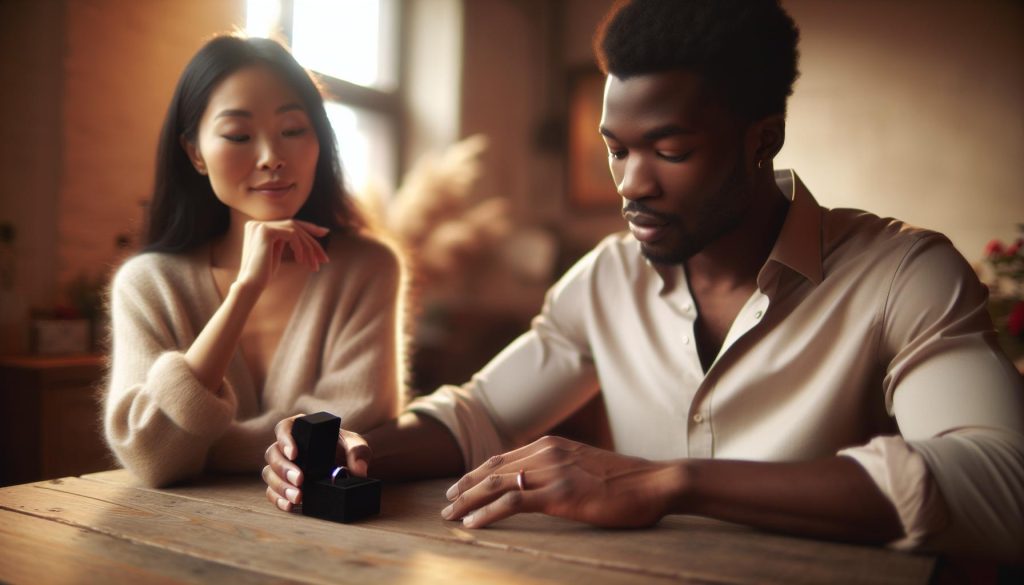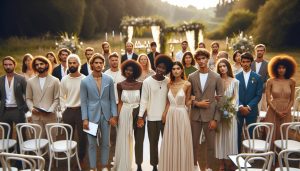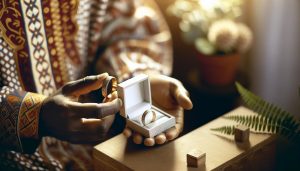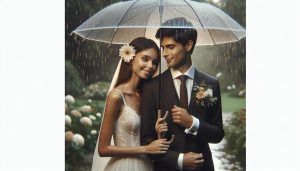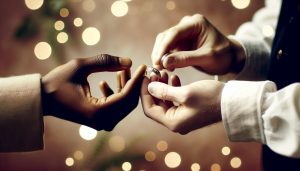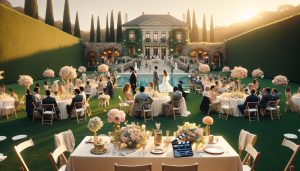When it comes to wedding planning, every detail counts, even down to who purchases the man’s wedding ring. Traditionally, this responsibility often fell to the bride; however, modern couples are breaking those norms, inviting collaborative decisions into the mix. This shift reflects changing values and priorities in relationships, sparking conversations about equality and personal expression within a marriage. Understanding the distinctions between these traditional and contemporary approaches not only enriches the planning experience but also reassures couples navigating their unique journey. As you explore the varying traditions surrounding this significant piece of jewelry, you may find insights that resonate with your love story, guiding you toward the choice that feels right for both partners. Dive deeper into this topic and discover how these evolving customs can beautifully complement your wedding vision.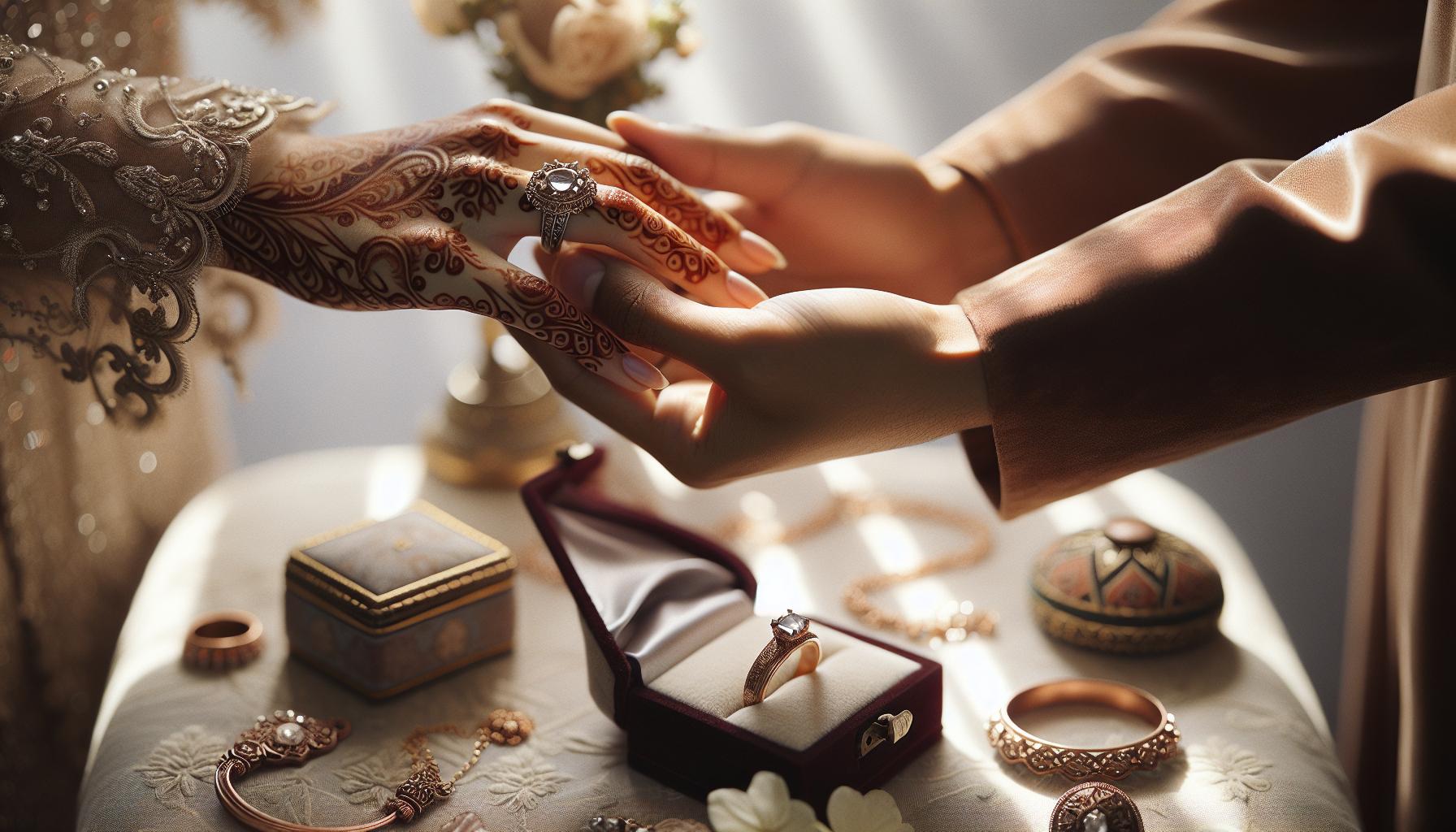
The Role of Tradition in Wedding Ring Choices
Tradition plays a pivotal role in shaping wedding ring choices, intertwining personal preferences with cultural heritage and shared values. Traditionally, the man’s wedding ring was often selected by the bride or his family, reflecting a timeless custom that linked the act of giving with the formation of a new family unit. This practice not only reinforced societal norms but also symbolized the commitment and responsibilities that come with marriage. As couples embark on their wedding journeys today, understanding these traditions can enrich their experience, allowing for choices that honor the past while accommodating contemporary values.
When exploring the dynamics of who buys the wedding ring, it’s essential to acknowledge how these traditions have evolved. In modern contexts, the decision has become increasingly collaborative, with couples often discussing and selecting rings together. This shift highlights a broader recognition of partnership in marriage, where both parties contribute equally to significant decisions. Many couples now emphasize individuality and shared interests, selecting rings that reflect their unique stories and commitment to each other rather than adhering strictly to traditional roles.
Moreover, cultural variations significantly influence wedding ring choices, with different societies embracing distinct customs and expectations. In some cultures, it is traditional for the groom to select a simple band, while in others, elaborate designs or gemstones are preferred. Embracing these cultural nuances not only enriches the wedding experience but also provides couples with a wonderful opportunity to blend traditions in a way that resonates with their identities. Ultimately, by balancing traditional values and modern preferences, couples can create a meaningful and personalized approach to their wedding rings, ensuring that these symbols of love and commitment reflect their unique journey together.
Modern Perspectives on Who Buys the Wedding Ring
In today’s evolving landscape of wedding traditions, the question of who buys the man’s wedding ring has transformed significantly. Historically, the responsibility often fell exclusively on the bride or her family, reinforcing traditional gender roles within marriage. However, as societal norms shift, so too does the approach to purchasing wedding rings. Couples now frequently lean toward a more egalitarian model, promoting collaboration between partners in the selection and purchase of rings.
Many modern couples recognize that wedding rings symbolize their shared journey rather than just reflecting individual roles. This perspective encourages them to approach ring buying as a joint decision-making process. Engaging in open conversations about preferences, styles, and budgets helps both partners feel equally invested in their choice, fostering a sense of unity and partnership. For instance, a couple might explore various designers together, discuss the significance of different metals or stones, and ultimately decide on a ring style that embodies their relationship’s values and aesthetics.
Furthermore, various online platforms and local jewelers have made it easier for couples to explore their options. Providing customizable options allows for personal touches and deeper connections to the pieces selected. Couples can collaborate to design rings that incorporate symbols of their relationship or stories of their commitment, making the buying experience both enjoyable and meaningful. In this context, the act of purchasing the man’s wedding ring becomes a celebration of their bond, deviating from the historical precedent of one partner making the decision in isolation.
This modern approach not only enhances the significance of the ring but also empowers both partners to celebrate their love equally. Whether it’s visiting shops in person or browsing online catalogs, the shared experience of selecting wedding rings strengthens the emotional connection in their upcoming marriage. It’s a beautiful reflection of their partnership, marking the beginning of a new chapter in their lives together.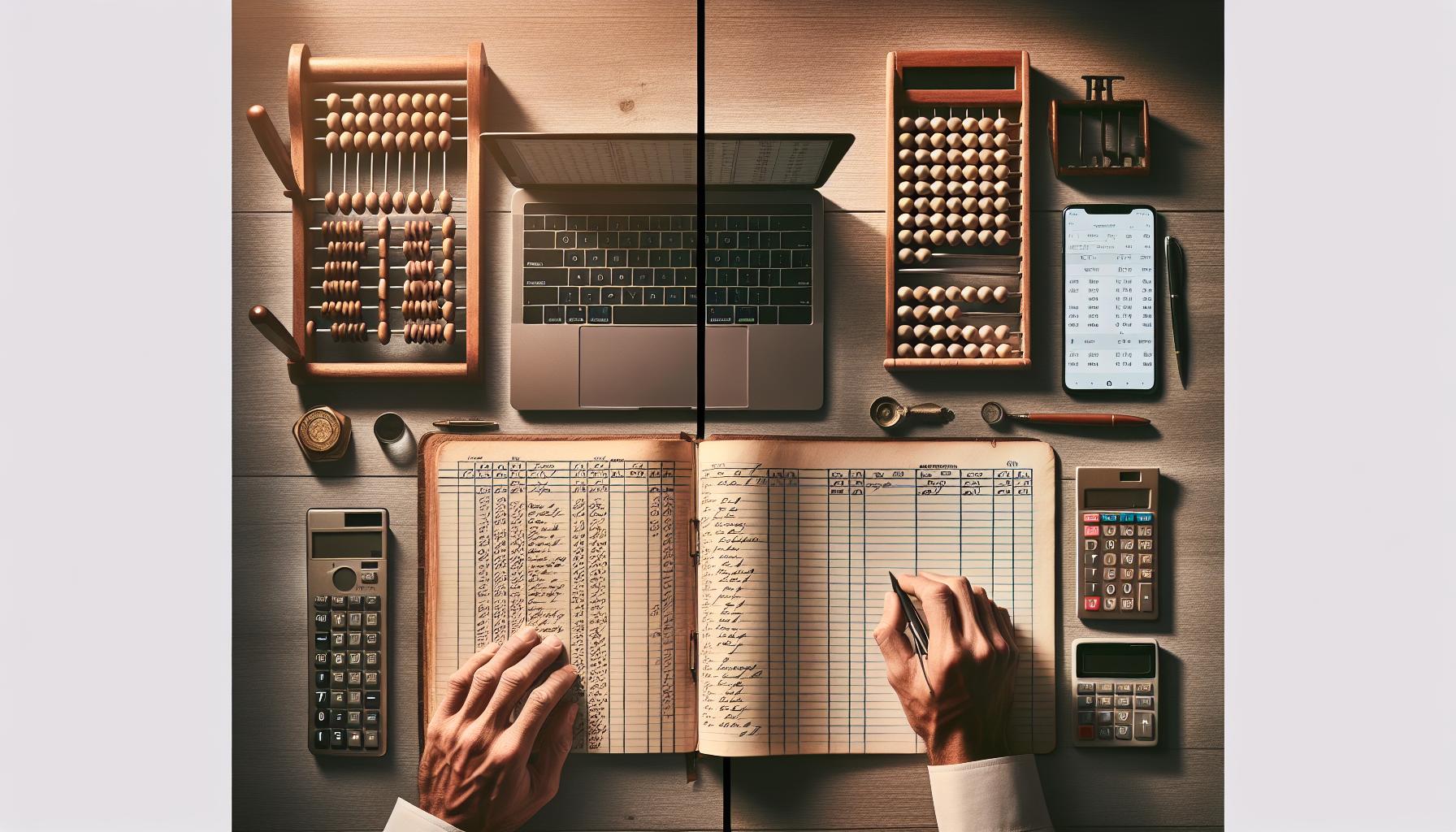
Comparing Costs: Traditional vs. Modern Approaches
The financial landscape of wedding rings has transformed dramatically, reflecting both changing societal norms and evolving preferences among couples. Traditionally, the cost of a man’s wedding ring was often covered by the bride or her family, a practice steeped in generational expectations and cultural customs. This approach not only reinforced gender roles but also dictated a certain price range and style which often failed to resonate with the modern couples who wear these symbols of love. The traditional expectation typically involved spending about two to three months’ salary on a ring, a guideline that many now find outdated and burdensome.
In contrast, modern couples are navigating the ring-buying process with a fresh perspective on costs, prioritizing collaboration and shared responsibility. This shift allows for a more diverse range of price points that accommodate various budgets, preferences, and styles. For example, some couples choose to set a flexible budget that reflects their unique financial situation and mutual values, leading to a more personalized ring selection process. Engaging open discussions about their ring budget empowers both partners to identify what matters most, whether it be stone quality, metal choice, or design intricacies.
Moreover, the rise of online retailers and custom jewelry designers has democratized access to wedding rings, offering options that cater to all budgets and tastes. Couples can explore a variety of styles-from minimalistic bands to intricately designed pieces-across different price ranges, making it easier to find an option that not only suits their finances but also embodies their story. Many are even opting for alternatives such as lab-grown diamonds or other gemstones, which can provide striking beauty at a more manageable cost, allowing couples to allocate their resources toward other aspects of their wedding or future together.
Ultimately, the modern approach to purchasing wedding rings not only fosters a sense of partnership in financial decisions but also encourages couples to fully embrace their individual styles and shared journey. By considering both tradition and contemporary choices, couples can navigate the emotional and financial aspects of choosing their wedding rings more effectively, ensuring that these meaningful symbols align with their unique love story.
Cultural Variations in Buying Wedding Rings
In many cultures around the globe, the significance of wedding rings extends far beyond the simple act of exchanging jewelry. Understanding these cultural variations can enrich a couple’s journey as they navigate their own preferences amidst traditional expectations. For instance, in some Western cultures, it is customary for the groom to purchase his own wedding ring, often selecting something that complements his partner’s choice. However, this is not universal; in many cultures, the groom’s ring is considered a gift from the bride, symbolizing her love and commitment.
In contrast, various Asian traditions may place different emphases on who buys the rings. For example, in Chinese weddings, families often play a crucial role in the ring selection process, with the groom’s family typically presenting a “betrothal gift” which may include rings among other items. This act not only represents the union between two individuals but also serves to honor family ties and lineage. In India, wedding rings may not even hold the same significance as other items like necklaces or bangles that are exchanged during the ceremony. Couples may find themselves navigating a blend of personal preferences and familial expectations, perhaps leading to decisions that reflect both tradition and modernity.
Additionally, cultural practices around engagement and wedding rings often vary widely based on religious beliefs. For example, in some Christian traditions, the exchange of wedding rings signifies not only the couple’s love but also their promise before God. Alternatively, many Jewish couples follow the custom of using a simple gold band, which carries deep historical and religious significance. Thus, when considering who should buy the man’s wedding ring, couples must also reflect on their religious backgrounds and the traditions that resonate most with them.
Ultimately, the journey of selecting wedding rings-especially the man’s ring-can be an opportunity for couples to connect with their heritage. Embracing the diverse customs and practices around wedding rings not only honors their cultures but also fosters a deeper understanding of each partner’s values and beliefs. Couples are encouraged to explore these cultural dimensions, engaging in conversations about their expectations and desires, leading to a decision-making process that is collaborative, meaningful, and celebratory.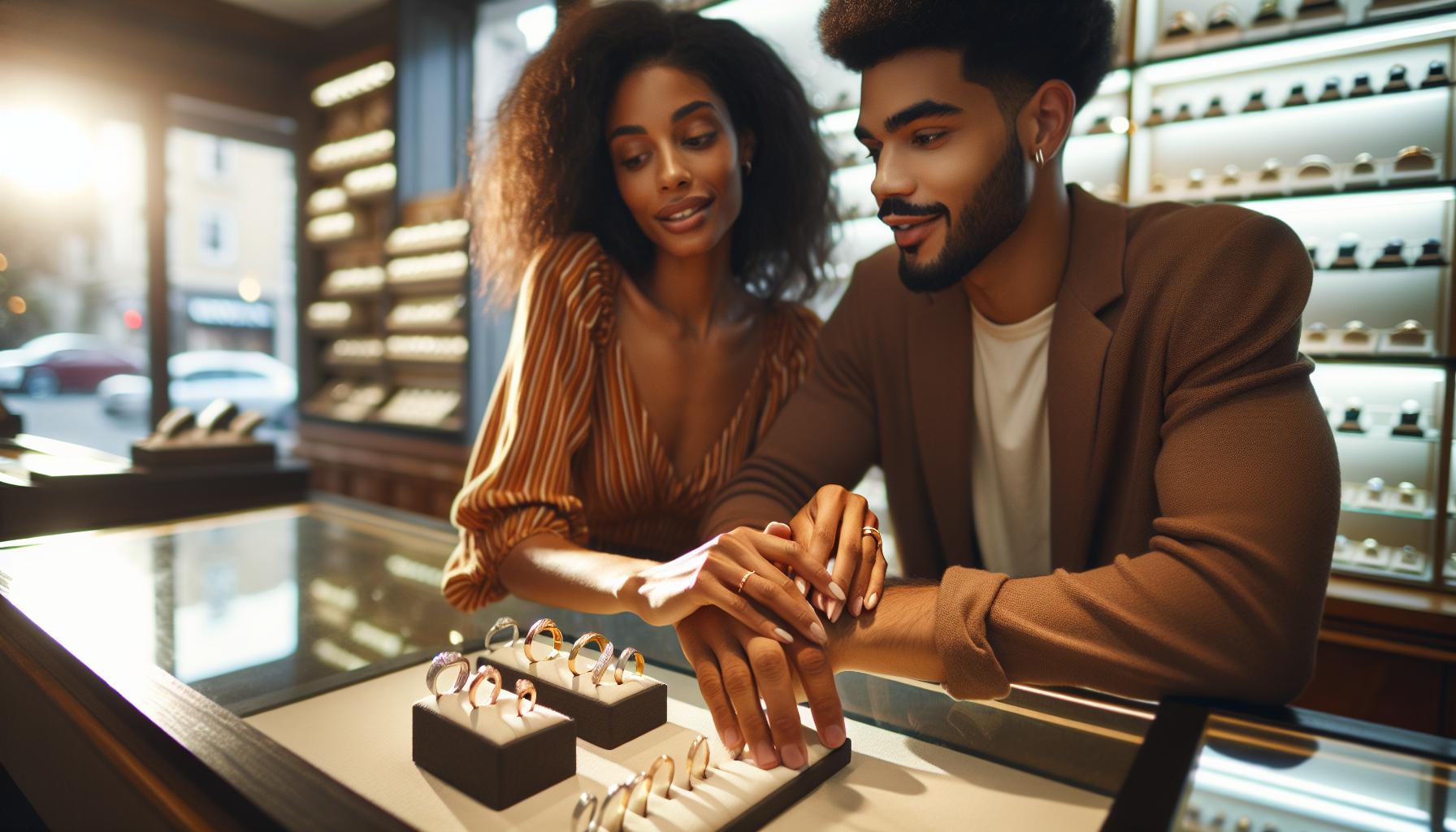
The Emotional Significance Behind Wedding Ring Purchases
Choosing a wedding ring is more than just a shopping trip; it’s an emotional journey that symbolizes a couple’s commitment and love for one another. Many people don’t realize that the process of selecting a ring can evoke a wide range of feelings-from excitement to anxiety-especially when it comes to the question of who should purchase the man’s wedding ring. The emotional significance tied to these rings often reflects shared values, individual histories, and hopes for the future, making the decision deeply personal.
When couples approach ring buying, they may experience a blend of traditional and modern influences, leading to meaningful conversations about their relationship. For some, the act of selecting a ring together can be a bonding experience, where each partner’s preferences contribute to the final choice. Engaging in this joint decision-making not only reinforces their commitment but also highlights the importance of mutual respect in their relationship. The ring then becomes a physical manifestation of their shared journey, representing both their past and future.
The emotional weight of a wedding ring extends beyond its design and cost; it embodies promises, hopes, and the connection each partner has to their own familial traditions. For instance, a ring may symbolize not just the love between partners but also honor the traditions of past generations. Couples might consider incorporating family heirlooms or personal touches-such as engravings or unique stones-that resonate with their individual stories. This added layer of meaning can deepen their connection to the ring, transforming it from a mere accessory into a cherished keepsake.
As couples navigate this process, it’s important to stay open and communicate feelings surrounding ring choices. Discussing expectations, budget constraints, and personal significance can make the experience enjoyable rather than stressful. Whether one partner prefers to take the lead or they explore options together, prioritizing dialogue enhances their emotional connection. In doing so, they can ensure that the ring they ultimately select becomes a true symbol of their love-a lasting reminder of their promise to one another.
Tips for Couples Navigating Ring Buying Decisions
Navigating the journey of selecting a wedding ring is an exciting and, at times, overwhelming experience for couples. The decision-making process can be enriching, allowing partners to explore their individual styles, preferences, and the deeper significance behind these beautiful symbols of commitment. To ensure this journey fosters connection rather than stress, here are some practical tips that can help couples move forward with confidence and joy.
Start by having an open and honest dialogue about your expectations and budgets. Discussing who will contribute financially can clarify roles and reduce potential misunderstandings later. Having a clear budget in mind will not only help in narrowing down options but also prevent any financial strain post-purchase. Consider sharing any personal or familial preferences regarding styles, metals, or gem types. This conversation enables both partners to feel included, and it may introduce new ideas that resonate with their story, such as incorporating family heirlooms or custom designs.
When it comes to exploring styles, try to visit jewelry stores together to get a sense of what appeals most to both of you. Don’t hesitate to compare traditional options against modern designs; understanding the range can enhance your appreciation for different perspectives. Keep an eye out for features that might symbolize your unique relationship-like engravings that hold personal meaning or materials that reflect shared interests. Use this time to discover what each of you loves, fostering a sense of teamwork and mutual respect.
Lastly, remember that there are no hard and fast rules dictating who buys what. In contemporary contexts, many couples choose to purchase their rings together, blending tradition with modern practicality. Make the ring selection process a shared experience filled with laughter, creativity, and storytelling. This approach will not only make the decision joyful but also transform the rings into cherished mementos of your love, reminding you both of the journey you embarked on together. With thoughtful communication and a collaborative spirit, choosing a wedding ring can become a celebratory milestone in your relationship, reflective of your promises and shared future.
Understanding Symbolism in Wedding Ring Selection
Choosing a wedding ring is often seen as a rite of passage within the journey of engagement and marriage, infused with layers of symbolism and personal meaning. The ring serves not just as an accessory, but as a profound emblem of love, commitment, and partnership. As couples navigate modern interpretations of tradition, understanding the symbolism behind wedding ring choices becomes essential in making an informed and cohesive decision reflecting their unique connection.
One of the primary symbols associated with wedding rings is the idea of eternity. The unbroken circle of a ring symbolizes a never-ending love, with no beginning and no end. This concept resonates deeply in traditional contexts, but modern couples often embrace personal variations of this symbolism. For instance, many now choose rings that incorporate gemstones with particular meanings-such as sapphires for loyalty or emeralds for rebirth-which can represent their relationship’s unique traits or shared experiences. The incorporation of heirloom pieces can also add personal history to this symbolism, connecting past generations to present love stories.
In addition to the designs and materials, the purchase of a wedding ring can be symbolic in and of itself. Historically, it was customary for one partner, often the man, to select a ring for the other. However, contemporary practices increasingly encourage collaborative decisions, reflecting a more egalitarian approach to engagement and marriage. Couples may choose to shop together, blending their preferences and styles while actively participating in the symbolic act of purchasing each other’s rings. This joint decision-making embodies the partnership fundamental to the marriage itself, reinforcing the idea that both individuals contribute equally to their shared life journey.
As you explore the significance behind various wedding rings, consider how each choice invites storytelling into your lives. From selecting specific metals that resonate with both partners to opting for custom designs that depict shared interests or aspirations, every element can heighten the emotional value of the ring. In this way, the process of ring selection can transcend mere tradition, transforming into a celebration of each couple’s unique love story while honoring their individual preferences and values.
Influence of Relationship Dynamics on Ring Purchases
In the journey towards selecting wedding rings, the dynamics of a couple’s relationship significantly influence who purchases the man’s wedding ring. Traditionally, the responsibility often fell on the bride or her family; however, this perspective has evolved. Nowadays, many couples view ring purchasing as a shared experience, fostering not only collaboration but also reinforcing the partnership at the heart of their connection.
Engagement and wedding ring decisions can be reflective of the relationship’s nature. For instance, in relationships where both partners are financially independent and involved in significant purchasing decisions, the couple may mutually agree on budgets, styles, and even who pays for what. This collaborative spirit can ease stress and create an enjoyable shopping experience that honors each partner’s tastes and preferences. Couples might discuss what they want in terms of metals, stones, and styles, creating a ring that symbolizes their individual journeys as well as their future together.
Moreover, cultural backgrounds can shape the dynamics of who buys the wedding ring. In some cultures, it’s customary for the bride’s family to purchase the rings, while in others, it may be expected for the groom to buy both rings or for the couple to share the cost entirely. Understanding these cultural nuances can guide couples in making decisions that respect their traditions while also adapting to modern practices that promote equality in relationships.
Ultimately, the act of purchasing a wedding ring can serve as a significant bonding experience. As couples navigate their personal preferences alongside traditions and expectations, it’s essential to communicate openly and ensure that the process feels inclusive and representative of their love. By framing this decision as a luxurious and memorable moment in their journey, couples create lasting memories that align with their unique narrative and relationship dynamics.
Real Experiences: Couples Share Their Wedding Ring Stories
In the realm of wedding planning, the stories behind each couple’s choice of wedding rings are as varied and rich as the relationships themselves. For many, the tradition of who buys the wedding ring is just as significant as the ring itself, often reflecting both personal history and evolving societal norms. One joyful story comes from Sarah and Jake, who chose to break traditional norms. Despite the expectation that Sarah’s family would purchase the rings, they decided together to each buy their own rings as a symbol of their partnership. This decision not only relieved family expectations but also allowed both partners to select rings that truly reflected their individuality.
Shared Experiences Strengthening Bonds
For couples like Mia and Lucas, the ring-buying experience became an adventure that deepened their bond. They embarked on a weekend trip to a quaint town known for its artisan jewelers, turning their search into a cherished getaway. Initially, Lucas assumed he would choose his own wedding band, but as they explored different styles and materials together, he found joy in Mia’s input. “We ended up selecting a simple yet elegant ring, which represented both of our tastes,” Lucas recalls. This collaborative approach not only solidified their relationship but also transformed a solitary task into a shared memory.
Acknowledging Cultural Traditions
In contrast, Priya and Amir’s journey highlighted the richness of cultural traditions in the ring-buying process. Coming from families that had specific expectations, Amir felt the responsibility of purchasing the rings solely on him. However, when he discussed this tradition with Priya, they realized how much they wanted to honor their families while also incorporating their own wishes. They agreed to share the cost of the rings, which resulted in a beautiful solution that celebrated both their cultures and their modern perspective of partnership. “In the end,” Priya says, “not only were we happy with our beautiful rings, but we also felt like we had succeeded in merging our families’ traditions with our own modern twist.”
Embracing the narratives surrounding wedding rings can inspire couples to think creatively and collaboratively about their choices. By discussing personal preferences, budget considerations, and cultural expectations, couples have the opportunity to cultivate a process that reflects their unique love story. Whether individuals opt for traditional roles or embrace a joint decision, the experiences shared during the ring selection can enhance their journey toward married life, making it memorable and meaningful.
Alternatives to Traditional Wedding Rings
Among the many facets of wedding planning, choosing the right ring is often an exhilarating yet daunting endeavor, especially for those looking to stray from traditional styles. Today, couples increasingly seek alternatives that resonate more authentically with their values, personalities, and lifestyles. These choices can transform the wedding ring from merely a piece of jewelry into a significant emblem of their unique union.
Choosing unconventional materials can be a fun way to reflect personal style. Couples might consider options like wood, ceramic, or silicone, all of which offer a contemporary twist on the classic metal band. Wood rings, for instance, present a stunning natural aesthetic and often evoke personal meaning, especially if made from trees significant to the couple’s relationship. Alternatively, silicone rings are particularly appealing for active couples or those in professions where traditional metal bands may not be practical, offering both functionality and comfort.
Engraving personalized messages or significant symbols inside the ring is another way to make a traditional piece feel unique. Couples can opt for meaningful dates, quotes from their favorite books, or even custom designs that symbolize their story. Such an intimate touch not only enhances the emotional value of the ring but also serves as a daily reminder of their commitment and shared journey.
Moreover, the newly popular concept of stackable rings allows for customization and adaptability. Instead of a single wedding band, couples may choose several rings that they can mix and match depending on their style or mood. This flexibility symbolizes the evolving nature of their relationship while providing a canvas for creative expression. The journey of selecting a wedding ring can be an adventure, turning what was once a simple tradition into a personal and celebratory experience that truly represents the partnership.
In conclusion, as contemporary couples navigate the question of who buys the wedding ring, considering these unique alternatives can not only alleviate traditional pressures but also deepen the bond between partners. By exploring these options together, couples can create a memory-filled experience that honors their love story, making the choice of each ring a true celebration of their commitment.
Expert Advice on Choosing the Perfect Wedding Ring
Choosing the ideal wedding ring is not just a reflection of personal style; it also embodies the profound commitment shared between partners. When navigating the often bewildering domain of who buys the man’s wedding ring, understanding the blend of modern sensibilities with traditional expectations can significantly enhance the selection process. Many couples today embrace a collaborative approach where both partners take part in the decision-making, thus ensuring the chosen ring resonates with their shared aesthetics and values.
The first step in finding the right wedding ring is establishing an open line of communication about preferences and budgets. Couples should discuss the significance of the ring, including design elements that resonate with both partners. Consider the following factors when making your choice:
- Material: Explore a variety of materials beyond traditional gold or platinum, including alternate metals, ceramics, or recycled materials that reflect sustainability.
- Style: Decide if a classic, modern, or unique design fits best. Styles like etched bands, colored gemstones, or those featuring intricate designs can personal narratives.
- Size and Comfort: Ensure the ring is not only visually appealing but also comfortable for daily wear. If possible, try on different styles to get a feel for weight and fit.
Setting a realistic budget early in the process is crucial. Discussing finances openly can alleviate stress later; it allows couples to enjoy the selection experience without overspending. Many jewelers offer a range of options that can accommodate various budgets, from more cost-effective materials to high-quality artisanal pieces.
Once decisions on the ring’s design and budget are made, visiting local jewelers or exploring online retailers can provide inspiration. Pay attention to customer reviews and check for warranty or return policies, as customization often comes into play. Ultimately, the goal is to choose a ring that represents not just a moment, but the entirety of your committed journey together.
By viewing the ring-buying process as a shared adventure, couples can create lasting memories from their planning experience, ensuring that the final result is both a reflection of individual identities and a celebration of their union.
Making the Wedding Ring a Joint Decision
In today’s evolving landscape of wedding traditions, couples are increasingly embracing the practice of purchasing wedding rings as a joint endeavor, transforming what was once a solitary decision into a shared celebration. By engaging both partners in the ring selection process, the journey becomes an opportunity to deepen their connection and align their tastes. This collaborative approach not only reflects modern values but also ensures that the final choice symbolizes their mutual commitment and personal preferences.
Communication is vital when making a ring a joint decision. Start by discussing your individual styles and expectations. Create a relaxed atmosphere where both partners can freely express their thoughts on materials, styles, and budgets. Questions to explore might include:
- What type of metal resonates with you-gold, platinum, or perhaps something unique like titanium?
- Do you envision traditional or contemporary design elements?
- How important is comfort and fit in your daily life together?
Exploring various options together can also be a rewarding part of the experience. Visiting local jewelers allows couples to try on different styles, while browsing online can offer a broader perspective. Celebrate the differences in taste; for example, one partner might prefer minimalist designs, while the other loves bolder statements. Finding a middle ground not only enriches the decision but creates lasting memories.
Moreover, incorporating cultural traditions can enhance this joint decision-making process. For instance, couples from diverse backgrounds may wish to blend elements from their respective cultures, leading to a more personalized selection that honors their stories. Look for features or symbols that represent your journey together. This thoughtful approach ensures that the ring is more than just a piece of jewelry-it becomes a cherished token of love that embodies both shared values and individual identities.
Faq
Q: Who typically buys the man’s wedding ring in modern times?
A: In modern times, it’s common for couples to decide together who buys the man’s wedding ring. This shift reflects a desire for equality and shared financial responsibility. Many couples choose to split the cost or make a joint purchase, aligning with their personal values and circumstances.
Q: What are traditional rules about purchasing men’s wedding rings?
A: Traditionally, the groom’s wedding ring was often purchased by the bride as part of the engagement or wedding preparations. This custom symbolizes the bride’s commitment and choice, but many couples today embrace a more collaborative approach that reflects their partnership.
Q: Are there cultural differences in buying men’s wedding rings?
A: Yes, cultural variations can significantly influence who buys the man’s wedding ring. For instance, in some cultures, the groom may purchase his ring to signify self-gifting, while in others, it may be viewed as a joint decision reflecting mutual commitment. Understanding these differences can enrich the buying experience.
Q: How do personal finance considerations affect ring purchases?
A: Personal finance greatly impacts wedding ring purchases, as couples balance their budget with their desires. They may prioritize affordable options or focus on matching styles. Open conversations about financial expectations can help align their choices with shared goals.
Q: When should a couple decide on who buys the man’s wedding ring?
A: Couples should ideally discuss who buys the man’s wedding ring during their engagement planning phase. This allows time for budget considerations and design preferences, ensuring that both partners feel valued in the decision-making process.
Q: Why is symbolism important in choosing a man’s wedding ring?
A: The symbolism of a man’s wedding ring often represents commitment, partnership, and love. Understanding its significance helps couples choose designs that reflect their unique relationship, making the ring a meaningful representation of their bond.
Q: What alternatives exist to traditional men’s wedding rings?
A: Alternatives to traditional men’s wedding rings include silicone bands, unique materials like wood and leather, or custom designs that reflect personal style. Exploring these options allows couples to find rings that match their lifestyle and values.
Q: How can couples navigate ring shopping effectively?
A: Couples can navigate ring shopping effectively by discussing their budget, preferences, and styles beforehand. Visiting various jewelers together can enhance the experience, ensuring that both partners are satisfied with the final selection while fostering teamwork in the process.
Concluding Remarks
As you navigate the decision of who buys the man’s wedding ring, remember that whether you lean towards modern customs or traditional practices, what matters most is that the choice resonates with both partners. The evolving nature of wedding traditions means there’s room for flexibility in your celebration. If you have lingering questions or need inspiration for your wedding journey, explore our resources on wedding budgeting, venue selection, and cultural traditions that can help shape your special day.
Don’t forget to check out related articles such as “Choosing the Perfect Wedding Venue” and “Essential Wedding Planning Tips,” which provide further insights and guidance to enhance your planning experience. Join our community by signing up for our newsletter for expert advice, wedding tips, and the latest trends that can make your celebration truly unforgettable. Your wedding is a reflection of your love story-embrace it fully and let your creativity shine! We’d love to hear about your wedding plans or thoughts on wedding traditions, so feel free to share in the comments below!

